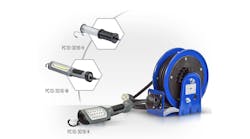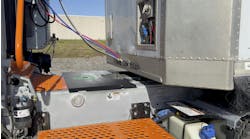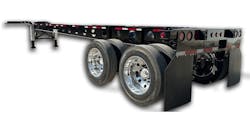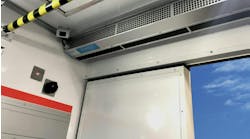It’s nearly impossible to attend an industry trade show or conference without hearing the terms “artificial intelligence” or “data-driven.” While they might sound like computer science terms, trucking software and telematics companies, such as predictive fleet maintenance platform Uptake, are leveraging data and AI to improve operations, efficiency, and uptime.
Uptake integrates with fleet management platforms such as Samsara, Trimble, Geotab, and more, gathering data and information from the systems’ cloud networks. Uptake uses this data to detect engine, aftertreatment, and ABS anomalies and abnormalities.
“We connect to the Geotab Cloud; we’re pulling that data in, and we’re running it against all our data science models,” Scott Sweitzer, Uptake director of strategic partnerships, said here at the Geotab Connect conference. These data science models “help the fleet owner... optimize their maintenance by getting them information that they can take action on in advance.”
This essentially means that Uptake can predict and detect when a vehicle needs maintenance attention—from a coolant leak to catastrophic failure. Fleet owners and maintenance managers can see this information for each vehicle on the Uptake dashboard.
The dashboard displays vehicle metrics with colors and percentages indicating the vehicle’s state—red being the most critical. Sweitzer said vehicles displayed in red would help a fleet manager decide whether to risk putting those vehicles on the road or take them directly to maintenance, depending on the percentage of its predicted failure.
Making sense of maintenance
The Uptake system predicts failures and maintenance issues through sensor data and fault codes. However, Sweitzer explained that the biggest problem with fault code data is that most faults thrown don’t indicate a critical failure or pose a risk; additionally, the number of faults any vehicle can experience is “unmanageable.” Sweitzer has even heard from customers who largely ignore fault codes because they can be “overwhelming.” On the other hand, ignoring critical fault codes can lead to reactionary maintenance, which can unexpectedly remove a vehicle from service and cost more in the long run.
With proper fault code monitoring, fleets can help keep vehicles in service longer, plan for downtime, and save money by addressing minor issues before they become big problems. This is how Uptake helps fleets—monitoring all fault codes and alerting fleets when potentially critical codes fire.
“We take those and go, ‘These are the ones you need to worry about,’” Sweitzer said, “and how we do that is we (measure) frequency and density in the fault.”
Uptake’s dashboard shows which vehicle problems will likely impact the fleet, and the system alerts managers of potentially problematic situations by sharing “insights.” The information in the Uptake dashboard can also help fleets decide what else to address on a vehicle if it’s already in the shop for routine maintenance, including recommended actions. This ensures that vehicles don’t break down later from a problem that could have been addressed during scheduled maintenance.
Sweitzer said the company has also seen increased traction because of its ability to integrate into work order systems. One Uptake customer has “so much trust” in Uptake’s insights that once a catastrophic insight is received for a vehicle, it automatically becomes a work order, Sweitzer told FleetOwner.
Technology extends vehicle life
Overall, having access to these insights enhances the maintenance operation because “it’s a truck telling you there’s something wrong,” Sweitzer explained.
The value of this information will vary, but having maintenance under control contributes to improved fleet aspects “downstream,” Sweitzer said. Having additional maintenance insight ensures on-time delivery by helping prevent unexpected breakdowns. It also contributes to fleet safety; fleets that don’t have breakdowns don’t have to worry about a driver (and the cargo they’re hauling) stranded on the side of the road.
At the American Trucking Associations’ MCE in October, Jim Rice, Uptake’s president, said that while many fleets aren’t neglecting truck maintenance, they’re not investing in it. With fleets coming away from a challenging 2023 and possibly having to extend the lives of their fleet vehicles, maintenance needs a “proper amount of attention,” Rice told FleetOwner.
Rice said that now is a great time for fleets to invest in new maintenance technologies, mainly because truck data is so accessible. He said that going from manual and traditional maintenance processes—like spreadsheets and mileage-based maintenance intervals—to using technology and data can improve your vehicle’s overall health. And that leads to improved operations for the entire fleet.









